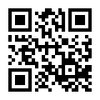文章基本信息
- 标题:I-TAC Concentration in Tears of Dry Eye Patients and Its Correlation with Tear Surface Parameters
- 本地全文:下载
- 作者:Kim, Hwang Gyun ; You, In Cheon ; Yoon, Kyung Chul 等
- 期刊名称:Journal of the Korean Ophthalmological Society
- 印刷版ISSN:0378-6471
- 出版年度:2008
- 卷号:49
- 期号:10
- 页码:1565-1571
- DOI:10.3341/jkos.2008.49.10.1565
- 语种:Korean
- 出版社:The Korean Ophthalmological Society
- 摘要:Purpose
This study was performed to evaluate the level of I-TAC in tears of patients with dry eye syndrome and its correlation with the tear surface parameters.
MethodsI-TAC levels were measured by enzyme-linked immunosorbent assay (ELISA) in tear samples collected from 33 dry eye patients (16 patients with Sjögren syndrome and 17 patients with non-Sjögren syndrome) and 15 control subjects. The correlations between I-TAC levels and tear surface parameters including tear film break-up time (BUT), basal tear secretion, tear clearance rate (TCR), corneal sensation, keratoepitheliopathy and conjunctival goblet cell density were analyzed.
ResultsThe mean levels of I-TAC were 717±377 pg/ml in patients with dry eye and 444±119 pg/ml in control subjects ( P =0.003). The mean levels in Sjögren syndrome patients (1261±324 pg/ml) were significantly higher than those of non-Sjögren syndrome patients (614±131 pg/ml, P =0.003). I-TAC levels correlated significantly with basal tear secretion ( P =0.006), TCR ( P =0.007), keratoepitheliopathy ( P =0.022) and goblet cell density ( P <0.001), but did not correlate with BUT ( P =0.110) and corneal sensation ( P =0.090).
ConclusionsThe level of I-TAC is elevated in tears of patients with dry eye syndrome including Sjögren syndrome. The level correlates with disease severity and tear surface parameters.
- 关键词:Chemokine; Dry eye syndrome; I-TAC

